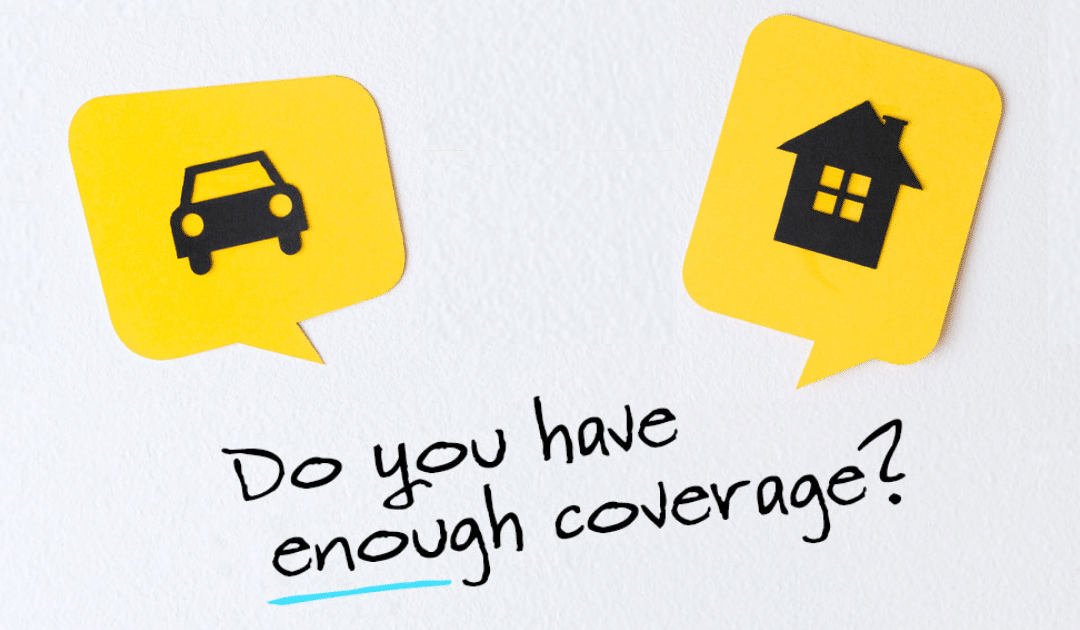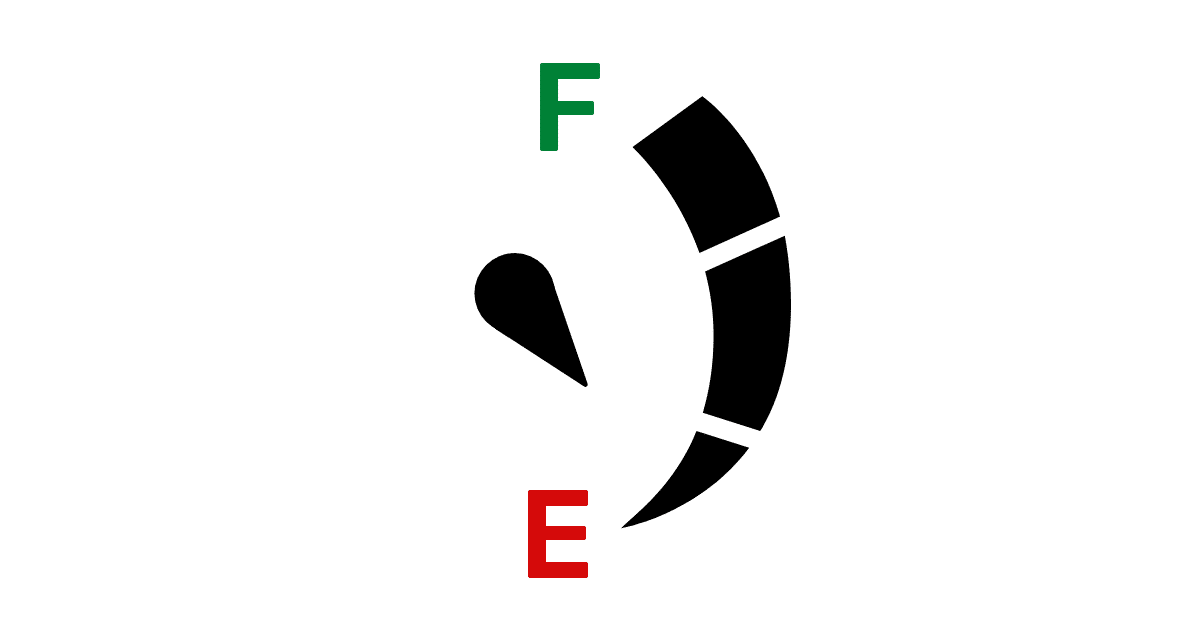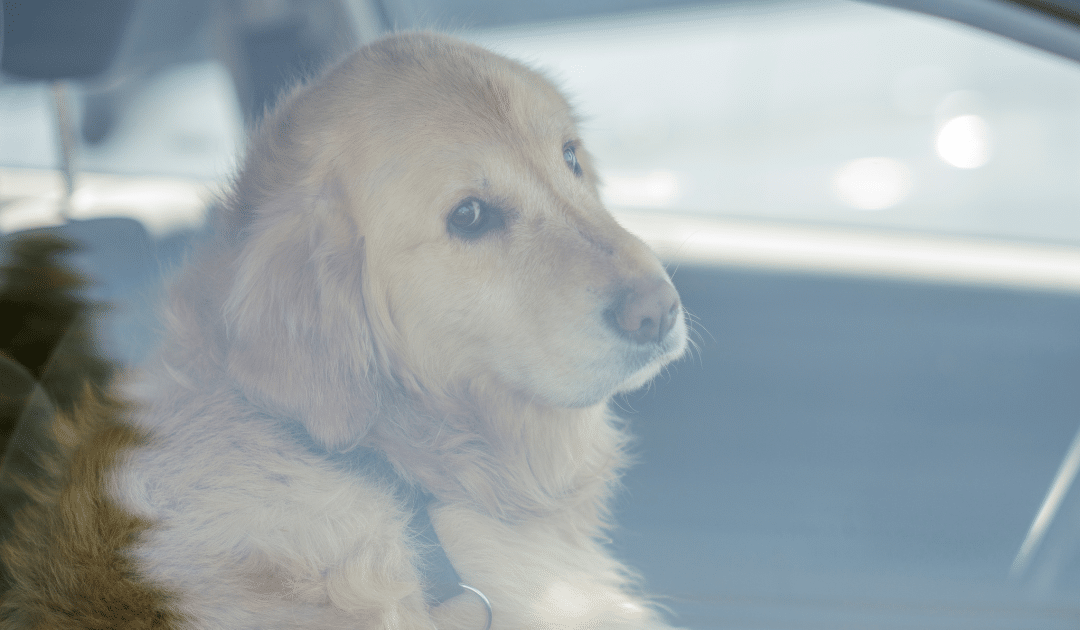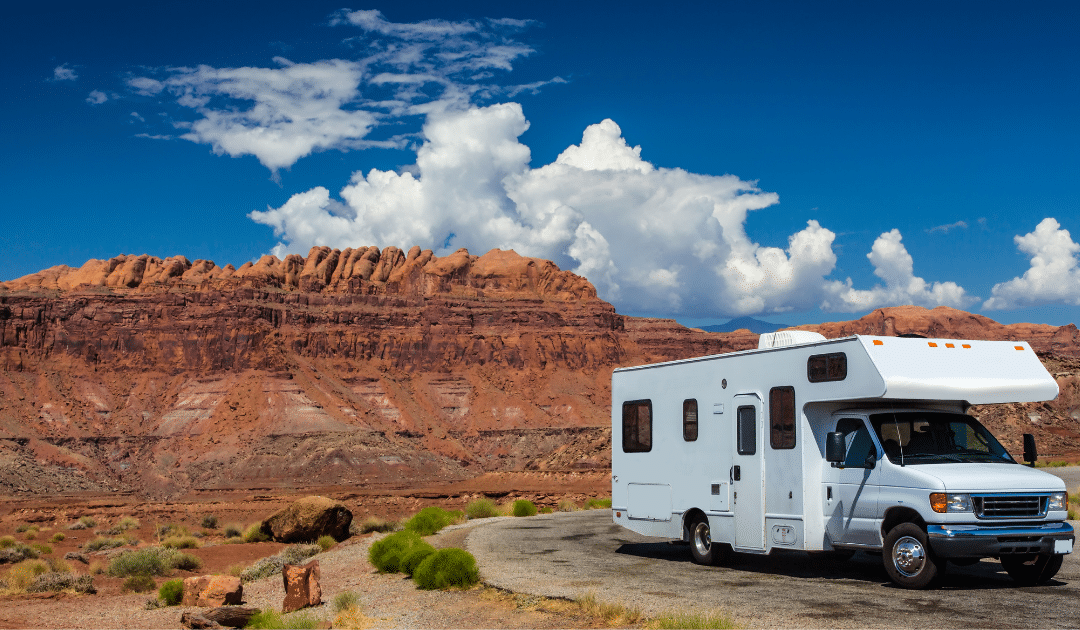by California Casualty | Auto Insurance Info |
We love—and need—our cars. So we should protect them to the fullest extent. July is National Vehicle Theft Protection Month and it’s the perfect time to take a look at whether we’re doing all we can to keep our cars safe.
Vehicle theft is more common than you think.
The pandemic has caused vehicle thefts to surge to the highest number in more than a decade. There were 873,000 vehicles stolen last year, up from an annual average of 750,000. A car is stolen in the U.S. every 36 seconds. As car prices rise and demand continues, we expect this trend to continue, too.
Don’t think it can happen to you? Think again- anyone can be a victim of vehicle theft. It takes less than 60 seconds for a thief to open your vehicle. They can use shaved or worn-down keys to jiggle the lock open. They can break the window or hotwire the car. For “keyless” vehicles, they use wireless transmitters to capture the signal from your key fob. They can also jam your signal as you’re locking your doors so that your vehicle doesn’t really lock.
How do you prevent vehicle theft?
Thieves are looking for an easy target. The harder you can make it for them, the less likely they are to target your car. Here are some ways you can prevent a break-in.
Anti-Theft Safety Devices
-
-
- Safety locks
- Steering wheel locks attach to the steering wheel to lock it in place.
- Tire locks attach to the outside of the tire, but are not easy to take on and off, so best for vehicles parked long-term.
- Hood locks vary by make and model so get one that fits yours exactly.
- Catalytic converter locks protect this car part that is often stolen.
- Car alarms usually require professional installation.
- GPS trackers are different than your GPS. They are specific devices to help the police find your car.
- Kill switches and engine immobilizers interrupt the ignition process. They change how your car operates so they’re not right for everyone.
Keyless Entry Safety
-
-
- Store the key fob in a signal-blocking box.
- Carry the fob in a shielded wallet or aluminum tin.
- Switch off your fob at night (if your key has this feature).
Other Steps You Can Take
-
-
- Etch your car’s VIN number on each window. Thieves often change the VIN to hide the identity of the car. They will not want to have to replace all the glass and may avoid your car as a result.
- Make sure your driveway is well lit.
- Trim shrubs and trees so you can clearly see your car from inside your house.
- Keep your vehicle doors locked when away from the car even for a minute.
- Close all windows, including the sunroof. Don’t leave your window cracked open even if it’s hot in the summer.
- Park in secure, well-lit areas.
- Don’t leave valuables in view. They could be tempting for a thief.
- Don’t leave your key in the car or your car running.
- Don’t keep your spare key hidden underneath your car. Thieves know where to look.
- Take your garage remote out of your car so thieves don’t have access to your house.
Remember, never leave any personal information in your car, such as a social security card, driver’s license, birth certificate, passport, or financial statement. Otherwise, you could be a victim of identity theft as well as vehicle theft.
Is your vehicle on the most stolen list?
Thieves prefer popular, high-performance cars, with interchangeable parts. They also like older cars, which typically do not have complex locks and security systems and can be sold for parts. Here are the latest statistics on the most common stolen vehicles in the U.S.:
- Honda Civic
- Honda Accord
- Ford Pickup
- Chevrolet Pickup
- Toyota Camry
- Nissan Altima
- Toyota Corolla
- GMC Pickup
- Dodge Pickup
- Jeep Cherokee/Grand Cherokee
Some regions are prone to car theft. Check your local statistics to see if yours is one.
What do you do if you are a victim of a theft?
Even if you take the proper precautions, thefts can still happen. If you are a victim of car theft, here are the steps to follow.
Step 1: Contact the police. Make sure that you have all of the information about your car, as they will need it. This includes the year, make, model, color, license plate number and vehicle identification number (VIN), any special markings (including dents). Write down the police report number; you will need it.
Step 2: Contact your insurance provider. You will need to provide them with the police report number and information about your vehicle. Your provider can tell you what your policy covers in the event of a theft.
Step 3: Arrange for transportation, such as a rental car. Note that rental car companies have a minimum age, usually 25. Some companies may offer rentals to younger drivers but at a higher cost.
Does insurance protect you if your vehicle is stolen?
If you have comprehensive auto insurance, you will be covered in case your car is stolen. Insurance will cover the cost of a replacement car, minus any deductibles or rental car costs that you may need to pay. Drivers who are paying loans on their vehicles are required to have comprehensive insurance. However, once you have paid off your car, this insurance is optional. Check with your insurer to see what is covered in the event of theft.
You can often save on your insurance premiums if you install anti-theft devices. Ask your provider for more information.
It typically takes 30 days before a vehicle is considered gone forever. Work with your insurance provider to get your claim paid, so you can get back on the road.
This article is furnished by California Casualty, providing auto and home insurance to educators, law enforcement officers, firefighters, and nurses. Get a quote at 1.866.704.8614 or www.calcas.com.

by California Casualty | Auto Insurance Info, Homeowners Insurance Info |
You know the basic coverage that comes with your health insurance, car insurance, and home insurance policies. But did you know there are other special insurance policies and add-ons that you could be missing out on?
If you’re traveling to Mexico, own an older home, a classic car, or have precious family heirlooms, etc., you should increase your protection by looking into purchasing these lesser-known insurance policies and options.
Planning to travel south of the border? Mexico does not recognize U.S. auto insurance. If you’re driving to Mexico from the U.S. in your own car or a rental, you will need to purchase a tourist auto policy.
-
- A Mexico auto policy will allow you to cover damages if you’re involved in an accident.
- If you cannot show proof of Mexican insurance, you can be heavily fined and even arrested. This is true even if you are not at fault for the accident.
- You can get coverage for the duration of your trip: a few days, a few months or longer.
2. Homes Built Before 1986
Homebuilding has changed over the years. If you’re living in a home built before 1986, it’s likely your house has outdated materials or old-fashioned types of construction. You can get a policy option that helps bring your house up to date if it is damaged.
-
- With this type of policy, in the event of a loss, your insurance covers repairs and/or replacement of outdated materials and construction methods.
- As a result, losses will cost less to settle.
- Those repairs and updates will reduce the coverage amount that you need to protect your home.
- This will ensure you have enough insurance to rebuild.
3. Special Computer Coverage
With everyone working remotely this past year, computers have become our lifeline. Consider a special computer coverage option to ensure you are covered for all of your devices: desktop computers, laptops, tablets, and smartphones. While homeowner policies typically cover possessions, special computer coverage offers more coverage.
-
- If you accidentally spill a glass of water on your computer, and your computer is damaged as a result, it would be covered.
- With this coverage, you will receive more money for your devices if they are damaged than with traditional homeowner’s.
Personal Property, also referred to as “contents coverage,” is the term insurance companies use to collectively define the things you own inside your home. Scheduled Personal Property (SPP) Coverage is for items that have higher values above your personal property coverage limits. This includes:
-
- Heirlooms
- Watches
- Jewelry
- Instruments
- Furs
SPP offers much broader coverage for your precious items – if you misplace a set of earrings, they are covered; if a diamond falls out of a ring, or a guitar neck breaks, they’re covered. There is no deductible if the covered items are stolen, lost, or damaged. SPP provides a replacement for the actual appraised value of the item.
Spending time and money on your classic car? Don’t let it go to waste. Make sure it’s protected with classic car insurance coverage. With this coverage, you will pay less than standard auto insurance coverage and you can determine the value, the deductible, and the policy options that work best for you including towing and coverage for lost or stolen parts. There are mileage plans that cover everything from cruising on the weekends to driving to attend auto shows.
-
- Classic Car Coverage is for all types of collectibles – collector trucks, classic and custom motorcycles, kit cars, fire engines, military vehicles, and more.
6. Refrigerated Property Coverage
When there is a power outage, the food in your refrigerator could spoil. A standard homeowner’s policy may cover the costs of replacing some of the food. A refrigerated property policy provides additional coverage.
- A refrigerated property policy adds up to $500 of coverage for property, such as meat that spoils because of a power outage or equipment failure.
7. Other Members of Your Household Coverage
Do you have someone living with you who is not a relative, guest, or tenant? You may consider this policy for other members of your household.
-
- If a boyfriend moves in, and he’s not on the lease, it may make sense to add this coverage.
- This policy adds personal property, liability, and additional living expense coverage for that person.
Our pets are like family and we want to keep them as healthy as possible. Pet insurance can help to offset those veterinary expenses.
-
- Depending on your policy, pet insurance may cover exams, prescriptions, lab tests and x-rays, surgeries, emergency visits, and even cancer.
- You make the initial payment and then are reimbursed depending upon the deductible and limits that you have selected.
9. Sump Pump Endorsement
If your home is prone to flooding, chances are that you have a sump pump to remove the water. A sump pump/water backup endorsement covers damage if your sump pump fails or something happened to cause water to back up into your home. This damage is not covered under standard homeowner policies.
-
- Just a couple of inches of water backup can cause thousands of dollars in damage – ruining carpets, destroying appliances, and crumbling drywall.
- This could happen to any system, and especially ones where sewer pipes are old.
10. Permitted Incidental Occupancies – Residence Premises (for Home-Based Businesses)
Do you have a home-based business? You may wish to add an endorsement to your homeowner’s policy.
-
- This policy covers limited activity for business that takes place in your home or in a detached garage or other building on your property.
- It protects entrepreneurs, such as teachers offering in-home tutoring or music lessons.
Ninety percent of Americans live in areas that are seismically active. If you live in an area that is prone to earthquakes, you may want to consider this additional coverage.
-
- Homeowner, condo, and rental insurance policies typically do not cover earthquakes.
- Earthquake insurance can help pay for some of your losses.
Floods are expensive. Just a couple of inches of water could cost thousands of dollars in damage to your home and belongings. There are a lot of myths about flood insurance; it’s important to know the facts.
-
- Flooding is America’s most common natural disaster.
- One in four homeowners will experience a flood during a 30-year mortgage.
- A flood insurance policy can protect your home and its contents.
This article is furnished by California Casualty, providing auto and home insurance to educators, law enforcement officers, firefighters, and nurses. Get a quote at 1.866.704.8614 or www.calcas.com.

by California Casualty | Auto Insurance Info |
Gas prices are on the rise. So how do you keep your tank full without emptying your wallet?

Dos:
-
- Make sure your tires have the correct pressure or PSI (referenced in your owner’s manual), good tread, and are properly aligned.
- Empty your vehicle (including your trunk) of any unnecessary items to reduce cargo weight.
- Use your cruise control when possible to maintain a constant speed.
- Combine several short trips into one long one. Engines are most efficient when they are warmed up.
- Try to avoid rush hour and take less busy routes to avoid the stop and go of bumper-to-bumper traffic.
- Slow down. Driving faster on the highway can really reduce your vehicle’s fuel efficiency.
- Keep track of gas mileage (or mpg – miles per gallon) with every tank refill. Note if any drastic change in the average.
- Your newer vehicle is controlled by software, so ask your dealer for an engine computer software upgrade. The update may lead to efficient operation and/or fix other problems.
- Use fully synthetic motor oil which will give you better performance (horsepower) and fuel economy.
- Park in the shade or use a windshield shade to keep your interior cooler. Then lower your windows when entering the car after it’s been parked a while. Your A/C will work more efficiently, giving you better MPGs.

Don’ts:
-
- Don’t stow heavy cargo on your vehicle’s roof. It increases drag and reduces fuel efficiency. With some makes and models, an empty roof rack carrier will still create drag and impact your MPGs.
- Don’t let your vehicle idle. There is no need to warm up modern vehicles without carburetors. You will use gas without going anywhere.
- Sudden accelerations waste a lot of fuel. “Gunning” the gas to leave a green light just to brake as you come up to the next red one isn’t going to get you there any faster. But it will reduce your fuel efficiency by close to 40%.
- Don’t use premium gas unless your car requires it. The only difference you’ll get is the higher price at the pump. However, Top Tier gas is worth a second look.
- Don’t forego the AC. It does have an impact on your vehicle’s fuel economy, but it’s worth the trade-off to keep the driver more alert.
- It’s not recommended to rely on your fuel tank warning light to prompt a visit to the gas station. Your driving needs during those last couple of gallons could have you on empty faster than you think.

Want to learn more? Here are a few fuel mileage myths debunked over recent years.
Myth #1
You have to drive a small car to get good fuel economy. FALSE.
For the 2021 model year, more than half of the top ten most efficient vehicles (the list that excludes EVs and PHEVs) are midsized or large cars.
Myth #2
Filing up in the morning gets you more gas. FALSE.
Gas tanks are underground, so they remain at that temperature as you fill up at the pump. The outside temp has very little impact on the temp of the gas, so more evaporation as the day gets warmer is highly unlikely.
Myth #3
A vehicle’s fuel economy decreases significantly as it ages. FALSE.
Vehicles that are 10 or even 15 years old will experience a little decrease in fuel economy if properly maintained.
Myth #4
Putting your tailgate down will make your truck more aerodynamic. FALSE.
If you own a pickup truck, leave the tailgate up! When the tailgate is up, a vortex is created in the bed which forces air coming over the cab to stay above the bed. If the tailgate is left down, the air enters the bed and creating additional drag.
Getting better gas mileage will put more money back in your pocket. If you are looking to save even more this summer, check out these tips to lower your cooling costs.

by California Casualty | Auto Insurance Info |
It may be hot, but chances are it’s not hot enough to fry an egg on the hood of your car. That’s just one of the many myths you might hear about hot cars. While such legends ] are fun to think about, some myths can be dangerous if believed.
The more you know about the truth about hot cars, the better you are able to stay safe this summer
Below are eight common hot car myths. We’ve also added steps you can take to protect your car, your kids, and your pets as the temperatures soar this summer. Here are the myths- debunked.
Myth #1
It’s only 10 minutes. It’s fine to leave the kids or the pets in the car.
You would be surprised at how quickly the inside of a parked car heats up. In just 10 minutes, the temperature can rise 20 degrees. Cars can reach dangerous levels quickly. It could be 60 degrees outside, but the inside of the car could be up to 100 degrees due to the windows functioning like a greenhouse and trapping the heat inside.
Don’t leave anyone in the car, especially children and pets who may be vulnerable to the heat. Children’s bodies cannot cool themselves as well as adults. Dogs can only cool themselves by panting. Even if you think it’s not that hot out, it’s best to err on the side of caution. What about if the air conditioning is running? That’s not a good idea either. There have been instances where the compressor has failed or dogs or children have bumped the controls, switching from cool to heat. There is never a safe way to do this so make alternate arrangements for child and pet care. If you see a child or pet in a hot car, call 911. It may just be a lifesaving call.
Myth #2
Leave the window cracked open to keep the car cool when you park.
You might think that opening the window a crack will help keep the temperature at a reasonable level. Surprisingly, there is just about a 2-degree difference between a closed window and one that’s cracked open. Plus a slightly open window can be an invitation to car thieves. It’s not worth risking a theft of your car or endangering anyone or anything inside.
If you’re parking your car, and you’d like to keep it cool, try these tips.
-
- Park in the shade or, if possible, in a garage.
- Use a sun shield for your windshield.
- Cover the interior with light-colored fabric.
- Consider a solar-powered ventilation fan.
- Finally, tinted windows can make a difference (but check first to see the rules in your state. Not all locations allow them)
Myth #3
You can save a lot of money by rolling down the windows and not using you’re a/C.
Want to save money in the summer and be more fuel-efficient, just sweat it out, right? Wrong. While blasting your air conditioner in the summertime does slightly increase gas usage, it is not enough that you would even notice. And while most people think all they have to do is roll their windows down so they do save that small percent of gas, rolling your windows down at high speeds can also reduce your fuel economy. This is because of the aerodynamic drag (wind resistance) it creates, making your vehicle use more energy to push through the air
Remember a hot driver is a distracted driver. So, don’t be afraid to use your AC. If you want to get the most out of your fuel this summer, roll your windows down when you are driving at lower speeds or when you first get into your vehicle to let the heat out and use your A/C (at a consistent temperature) when you are driving faster.
Myth #4
Only neglectful parents forget their child in a car.
You hear stories of babies or young children being left in cars with tragic endings. You might assume that those parents who would forget their children are bad parents. That’s not the case. It could easily happen to anyone.
Follow these tips so that you don’t put yourself or your child in this dangerous situation.
-
- Keep an important item in the back seat with your children such as a work ID, purse or wallet, or cell phone.
- Put your child’s stuffed animal, diaper bag, or other items in the front passenger seat as a reminder.
- Ask your child’s caregiver to contact you if your child does not arrive at a certain time.
These steps will help keep everyone aware—and safe.
Myth #5
You can’t do anything if your car overheats.
A vehicle can overheat for a number of reasons, but usually, it is because something is wrong with the cooling system. If you don’t take the proper action your engine could become permanently damaged. If your car overheats, don’t just pull to the side of the road- there are other steps that you need to take.
First, turn off the A/C and crank up your heat. We know this sounds bizarre in the summer, but it will pull heat away from your engine and give you time to pull over to a safe location. Next, shut off your car for about 15 minutes. Keep an eye on your temperature gauge and make sure it starts to drop. If you haven’t already, this is where you will need to check and add your coolant, if needed. Finally, after giving it a few minutes rest, restart your engine and take it to your local mechanic.
Myth #6
If it’s hot enough, your car window can shatter.
Unless your windshield has previous damage, you don’t have to worry about the glass shattering. But if the conditions are right, it could crack. Glass will expand when it’s hot and contract when it’s cold. Big swings in temperature can cause stress cracks, cracks that suddenly appear for no apparent reason.
You can prevent stress cracks in the future by
-
- Avoiding large changes in temperature such as blasting the air conditioning in a hot car.
- Parking in a garage to reduce heat exposure.
- If you’re washing your car on a hot day, try lukewarm water instead of cold for less of a temperature difference.
If you do get a stress crack, get it fixed as soon as possible. Check with your insurance provider to see if your policy will cover stress crack damage.
Myth #7
You need to fill up your gas tank in the morning
Many people think that you should fill up your gas tank in the morning when it’s cooler outside because gasoline will expand when heated. Meaning your get more energy per gallon in the early morning hours than you would later in the day when the temperature rises. This is false.
Not only does the energy content of gasoline stay the same in varying temperatures, filling stations store their gas in underground tanks. So the temperature of the gasoline coming out of the pump varies very little throughout the day. No matter what time you get gas, even in extreme heat, you will be getting the same energy content.
Myth #8
The heat won’t have a lasting effect on how your car runs.
Excessive heat can affect your car in the long term. Hot air in your tires causes them to expand, and they could over-inflate. The heat thins your engine oil so it doesn’t lubricate as well. High temperatures cause battery fluid to evaporate, which can weaken batteries or speed up the corrosion process.
Follow these tips to protect your car this summer.
-
- Monitor your tire pressure and watch for overinflation.
- Fill your engine oil to the highest level.
- Check your battery’s charge
- Schedule routine maintenance.
- Make sure to maintain your car to keep it running well.
These myths are proof that you shouldn’t believe everything that you see or hear. ( And as for debunking the” frying an egg on a hot car hood” myth, it has to be about 158 degrees Fahrenheit before eggs even start to cook. That egg can also damage the paint surface and turn into an expensive repair).
Knowledge is power, especially when it comes to your vehicle. Use yours wisely and have a safe summer.
This article is furnished by California Casualty, providing auto and home insurance to educators, law enforcement officers, firefighters, and nurses. Get a quote at 1.866.704.8614 or www.calcas.com.

by California Casualty | Auto Insurance Info, Safety |
It’s never a bad time for a road trip!
If you are like the millions of American’s who are hitting the road this season to travel in a Recreational Vehicle (RV), follow these 3 key steps to keep you safe.
1. Before You Hit the Road in Your RV:
- Check the exterior for cracks and missing or damaged seals
- Inspect and test the battery
- Examine and pressurize the tires
- Replace filters and replenish brake, coolant, transmission, hydraulic and washer fluids
- Clean, inspect and refill LP gas lines and appliances
- Test carbon monoxide and smoke detectors
- Flush and fill the water system looking for leaks, clarity, and drinkability
- Check batteries and that all appliances are working
- Inspect sewer hoses and waste tank valves for cracks or sticking
When you are far from home it is also vital that you have the right equipment on hand that can get you out of any situation.
2. What To Pack in Your RV:
- Proper extension cord with the correct amps
- Surge protector for variable campground electrical systems
- Drinking water approved hose
- Matches or a lighter
- Portable chargers
- Food, water, and essential groceries
- Pressure regulator and water filter for variable campsite water pressures and contaminates
- A set of tools
- Extra clothing and blankets
- Laser temperature tester to detect overheated brakes, tires, and axles
- Emergency first aid kit
The last step in making sure you are all prepared before you travel is making sure you have RV Insurance.
3. The Proper Coverage for Your RV
California Casualty has been providing RV Insurance for over 40 years. Our RV Insurance program is designed to accommodate almost all recreational vehicles from pop-ups to coaches. We cover motor homes up to $120,000 in value and our partner market covers up to $500,000 in value.
Coverages Include:
- Total Loss Replacement
- Emergency Vacation Expense
- Disappearing Deductibles
- Full Timer’s Package
- Replacement Cost Personal Effects
- 24-Hour Roadside Assistance
- Windshield Coverage
- Free Pet Injury
If you would like to add RV coverage to your policy call our Sales Department at 1-844-854-7265. For more information on RV Insurance Coverage, please contact our Customer Service Department at 1-800-704-8614 or visit www.calcas.com.
This article is furnished by California Casualty, providing auto and home insurance to educators, law enforcement officers, firefighters, and nurses. Get a quote at 1.866.704.8614 or www.calcas.com.

by California Casualty | Auto Insurance Info |
As more cyclists (of all ages) take to the road to enjoy the nice weather, now is a great time to brush up on the rules for safely sharing the streets.
Think of bikes as cars, but with fewer safety features. Road hazards such as potholes and debris may cause a cyclist to suddenly swerve, much like if they were driving a vehicle. And although riding on the right side of the lane is preferred for bike traffic, there may be the occasion when cyclists take to the center if road conditions require it.
Understanding cyclists and anticipating their next move will help you safely share the road. Here are some quick safety reminders on driving with cyclists this summer.
1. They have the right to “drive” in your lane, but they also need their space. Always give cyclists the right of way. Be sure to watch your speed compared to theirs. Pass only when there’s ample room (at least 3 feet between you and their bike) and while other vehicles are not approaching.
2. Look for bicyclists everywhere. Cyclists may not be riding where they should be or may be hard to see—especially in poorly lit conditions, including dusk/dawn/night and even in inclement weather.
3. Avoid turning in front of a bicyclist who is traveling on the road or sidewalk, often at an intersection or driveway. An oncoming cyclist may be traveling faster than you think. Drivers turning right on red should look to the right and behind to avoid hitting a bicyclist approaching from the right rear. Stop completely and look left-right-left and behind before turning right on red.
4. Completely stop at red lights or stop signs to let bikers pass or check for unseen bikers. Make eye contact with cyclists at intersections or crosswalks to acknowledge their presence and signal to let them know they are free to pass.
5. Don’t honk at someone on a bike. The noise could startle them, making them lose control of the bike they are riding. If it’s absolutely necessary, do so from a distance and make it a light tap.
6. Take extra precautions if you are sharing the road with children riding their bikes. They are smaller and harder to spot on the road, especially for drivers of bigger cars. Plus, these young bicyclists won’t have the same control over their bikes or know the rules of the road as mature riders.
7. Knowledge of common biking hand signals is a must. These include sticking the left arm straight out to indicate a left turn, holding the left arm up at a 90-degree angle to indicate a right turn, and pointing the left arm down at a 90-degree angle to indicate a stop or slowing down.
Taking extra precautions when you are behind the wheel and understanding a cyclist’s next move can help you avoid an accident. Use these tips this summer to help you both navigate the road ahead safely and seamlessly.
This article is furnished by California Casualty, providing auto and home insurance to educators, law enforcement officers, firefighters, and nurses. Get a quote at 1.866.704.8614 or www.calcas.com.








